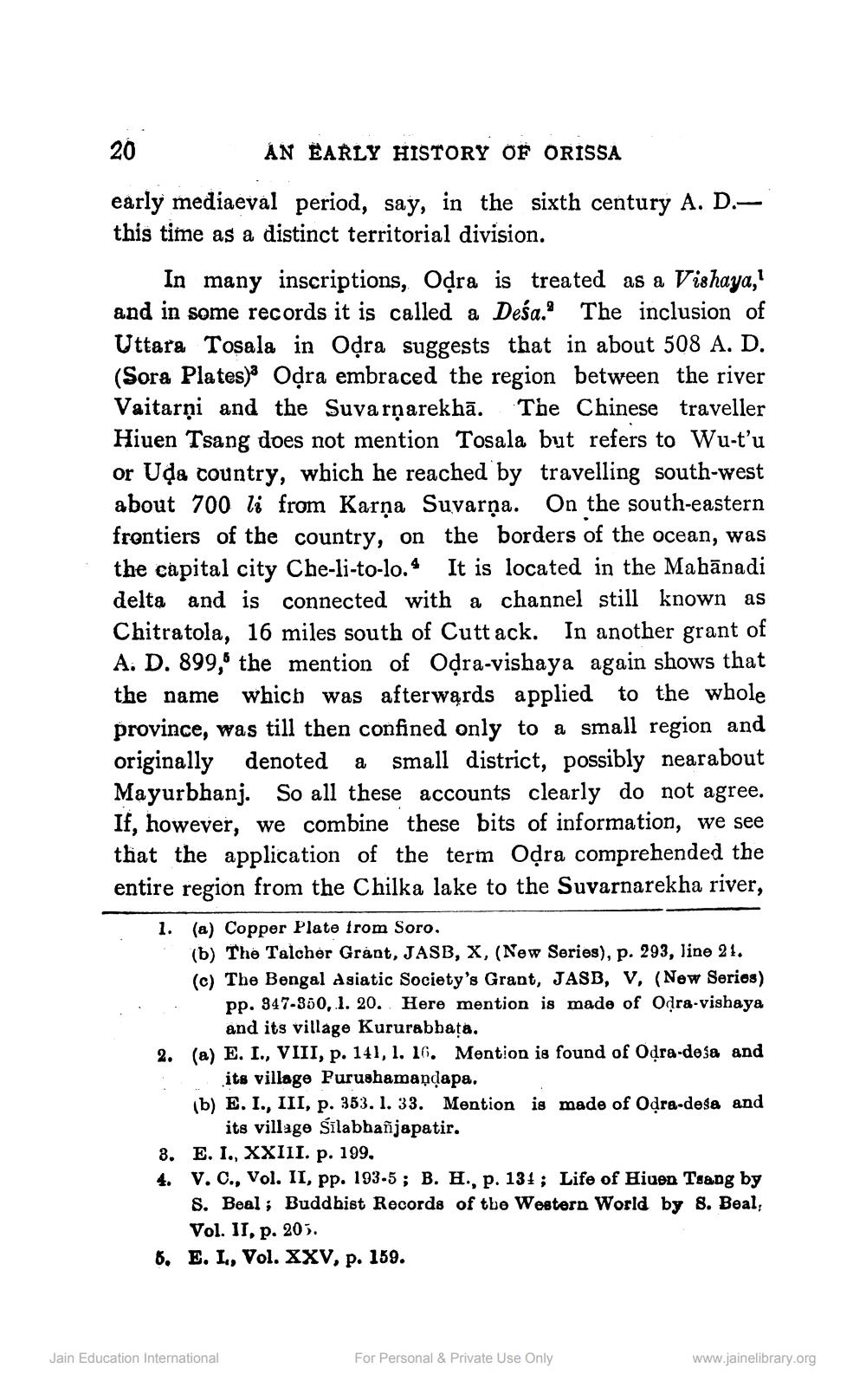________________
20
AN EARLY HISTORY OF ORISSA early mediaeval period, say, in the sixth century A. D.this time as a distinct territorial division.
In many inscriptions, Oļra is treated as a Vishaya,' and in some records it is called a Deśa. The inclusion of Uttara Tosala in Odra suggests that in about 508 A. D. (Sora Plates) Odra embraced the region between the river Vaitarņi and the Suvarnarekhā. The Chinese traveller Hiuen Tsang does not mention Tosala but refers to Wu-t'u or Uda country, which he reached by travelling south-west about 700 li from Karņa Suvarna. On the south-eastern frontiers of the country, on the borders of the ocean, was the capital city Che-li-to-lo. It is located in the Mahānadi delta and is connected with a channel still known as Chitratola, 16 miles south of Cutt ack. In another grant of A. D. 899," the mention of Oļra-vishaya again shows that the name which was afterwards applied to the whole province, was till then confined only to a small region and originally denoted a small district, possibly nearabout Mayurbhanj. So all these accounts clearly do not agree. If, however, we combine these bits of information, we see that the application of the term Oļra comprehended the entire region from the Chilka lake to the Suvarnarekha river, 1. (a) Copper Plate from Soro.
(b) The Talcher Grant, JASB, X, (New Series), p. 293, line 21. (c) The Bengal Asiatic Society's Grant, JASB, V, (New Series)
pp. 347-350, 1. 20. Here mention is made of Odra-vishaya
and its village Kururabbata. 2. (a) E. I., VIII, p. 141, 1. 16. Mention is found of Odra-desa and
its village Purushamaņdapa. b) E. I., III, p. 353. I. 33. Mention is made of Odra-desa and
its village silabhañjapatir. 8. E. I., XXIII. p. 199. 4. v. C., Vol. II, pp. 193-5; B. H., p. 131 ; Life of Hiuen Tsang by
S. Beal; Buddhist Records of tbe Western World by 8. Beal,
Vol. II, p. 205. 8. E. I, Vol. XXV, p. 159.
Jain Education International
For Personal & Private Use Only
www.jainelibrary.org




